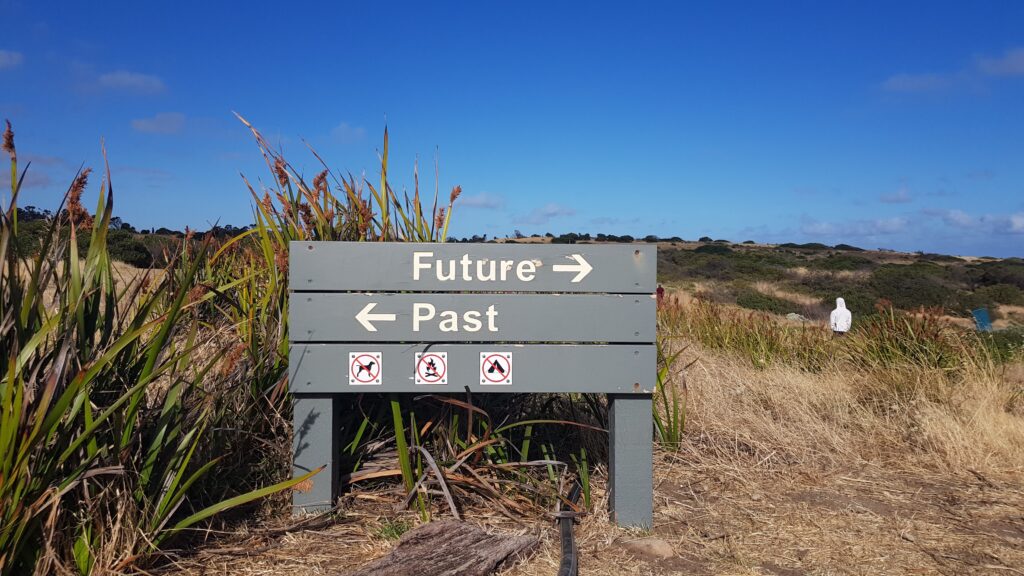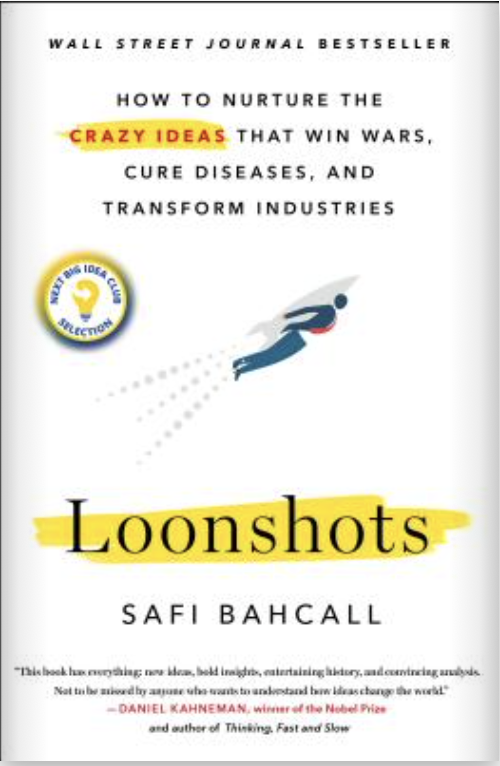We urgently need new ideas, tools, and technologies to solve the challenges we face now and in the future when it comes to innovation leadership. However, the delicate dance between revolutionary ideas and established successes drives progress in the ever-evolving innovation landscape. Entrepreneurs need creativity and persistence to advance ideas in a commercial landscape that frequently labels those ideas as “worthless, impossible, and stupid.” [2] They also need a robust ecosystem in which those ideas can advance to fully formed commercial products or services. That ecosystem relies heavily on contract service providers, particularly in medical products. Those service providers must balance delivering current best practice solutions and adopting new tools and technologies to improve product quality and service efficiency. Whether operating a company of one or thousands, leaders must balance these competing forces to deliver the final product. We’ll look at why innovation is hard and explore how to facilitate it in this Thinking Kat issue.

Why is innovation so hard?
Innovation is difficult for at least two reasons. First, the complexity of innovation has evolved significantly over time, influenced by shifts in technological advancements, economic structures, and societal attitudes. We can consider these changes in three categories: [3]
- Sourcing New Ideas: In the past, innovation often originated from a limited pool of experts within specific fields. Innovators relied on personal experience, expertise, and localized knowledge to generate new ideas. Information was relatively scarce, and idea generation was often confined to specific geographic regions or industry clusters. Communication channels were slower, making it challenging to access diverse perspectives.
In the present, the sourcing of new ideas has become more democratized due to increased connectivity and access to information. The rise of the internet, social media, and global collaboration platforms has enabled individuals from diverse backgrounds and locations to contribute to innovation. Crowdsourcing, open innovation, and hackathons are examples of how organizations tap into a broader range of perspectives to generate novel ideas. The latest iterations of AI tools are accelerating this process.
- Creating Commercially Viable Solutions: Historically, the path from idea to commercial viability was marked by significant barriers. Developing prototypes, researching, and securing funding required substantial resources and time. Limited access to capital and the absence of efficient development tools often hindered the transformation of innovative ideas into marketable products or services.
Today, advancements in technology and the availability of resources have streamlined the process of creating commercially viable solutions. Rapid prototyping, 3D printing, simulation tools, and cloud computing have reduced the time and costs associated with product development. Additionally, the emergence of venture capital, angel investors, government support, and crowdfunding platforms has made it easier (though still intricate!) for entrepreneurs to secure funding for their innovative ventures. Nevertheless, the process continues to be limited by human and operations capacities.
- Changing Attitudes toward New Technologies: In the past, society’s attitude toward new technologies was often characterized by skepticism and resistance to change. Innovations were cautiously met, as the potential benefits and risks were unclear. People were less accustomed to rapid technological shifts and needed more adaptive mechanisms.
In the present, attitudes toward new technologies have generally become more optimistic and adaptive. The widespread use of technology in daily life, coupled with a better understanding of the potential benefits, has led to greater openness to innovation. However, concerns about data privacy, ethical implications, and the impact on jobs remain essential as new technologies emerge, and some groups remain actively resistant to evidence of benefit.
Thus, the evolution of innovation’s complexity from a relatively isolated and resource-intensive process to a more collaborative, democratized, and technologically driven endeavor increases the speed of change and introduces new factors.

Second, though the innovation process was less complex in the past, it has never been a straight-line proposition. I can only imagine the endless trial and error that led to technological innovations before recorded history, yet this field of study occupies countless hours of research today. The processes of weaving, metallurgy, and construction (to name but a few) developed over centuries alongside helper technologies like gears, furnaces, and mortar or cement. Jumping forward a few millennia, the story of inventions within the past 400 years is full of circuitous paths, missed chances, and repeated claims of “That will never work.” Digging into these stories is fun, and interested readers should look for James Burke’s “Connections”[4] or Steven Johnson’s “How We Got To Now”[5] to start their exploration. A deep dive into the biographies of famous inventors (for example, Benjamin Franklin, Louis Pasteur, or Thomas Edison) shows they also faced setbacks and ridicule in pursuit of their ideas. In his book “Loonshots,” Safi Bahcall notes ideas often experience multiple apparent deaths or “false fails” during development.[6] And where white male innovators experience setbacks, female and diverse inventors face challenges that are orders of magnitude greater. If starting an entrepreneurial path is risky, consider how much harder it is to lead others to step outside their comfort zone for what appears a distant, if not unobtainable, reward. Nevertheless, many continue to try, and some leaders are successful. Why?

How to Facilitate Innovation and Leadership
Safi Bahcall provides one answer in his book.[6] Its central thesis revolves around the idea that within organizations, there are two types of innovations or ideas: “loonshots” and “franchises.”
A “loonshot” refers to a radical, groundbreaking idea or innovation that might seem a bit crazy or unconventional at first. These are the ideas that have the potential to revolutionize industries, cure diseases, or bring about significant positive change. On the other hand, “franchises” are the established and successful projects, products, or ideas that generate the majority of an organization’s revenue and reputation. Bahcall explores the challenges organizations face when balancing and nurturing both “loonshots” and “franchises.” He emphasizes the delicate balance between fostering innovative, high-risk ideas while maintaining the stability and profitability of existing successful ventures. Leaders create separate space for “artists” to develop “loonshots” and “soldiers” to operate the “franchise.” Critical to success is the opportunity for both groups to meet frequently, transferring new ideas and practical experience between each domain. He points to Vannevar Bush in the U.S. Government’s Office of Scientific Research and Development and Theodore Vail of AT&T as examples of such leadership.
Bahcall also introduces the concept of “phase transitions,” which refers to critical moments in an organization’s evolution when it shifts from one mode of operation to another. These transitions are crucial for accommodating the shift from nurturing radical ideas to scaling them up and turning them into successful franchises. Not every company successfully navigates this transition. We see regular examples of startup companies crushed by growth, and Bahcall provides several examples within long-established industries. Ultimately, “Loonshots” offers insights into how organizations can create an environment that encourages the development of revolutionary ideas and helps them transition from the initial risky stages to becoming transformative forces within their respective industries. It’s well worth reading if you lead an innovation effort.

We’ve explored innovation clusters, ecosystems, or hubs in previous issues. These geographic concentrations of interconnected companies, organizations, institutions, and individuals collaborate, innovate, and compete in a particular industry or field. Fostering innovation within and between sectors is a crucial challenge that innovation clusters often face.

Let’s explore how clusters manage this work:
- Managing the Transition from Established to New Practices: Disruptive, high-risk innovations that have the potential to create transformative changes are characterized by their experimental nature and uncertain outcomes. On the other hand, established, successful ideas, products, or companies generate consistent revenue and drive stability within an industry. Nevertheless, companies often face challenges that are pre-competitive within an industry. These challenges may rise to a level that threatens the entire industry. An innovation cluster convenes teams to explore root causes and develop sustainable solutions for the industry.
- Encouraging Exploration and Risk-Taking: Innovation clusters promote the pursuit of innovation by fostering an environment that supports experimentation and risk-taking. Research institutions, startups, and incubators within the cluster provide a platform for researchers, entrepreneurs, and innovators to explore unconventional ideas without fearing immediate failure. A managed risk environment encourages the development of groundbreaking innovations.
- Creating Supportive Infrastructure: Innovation clusters provide the necessary infrastructure and resources for inventions to thrive and reach commercial production. These supports include access to research facilities, funding opportunities, mentorship, and networking events. Clusters enable innovators to translate their ideas into tangible prototypes and products by providing a conducive environment.
- Collaborative Networks: Clusters promote collaboration among diverse stakeholders, including academia, industry, government, and investors. This collaboration can lead to the cross-fertilization of ideas, where expertise from one sector informs innovations in another. The exchange of knowledge and resources helps “loonshots” and “franchises” flourish.
- Transitioning Innovation to Application: Innovation clusters recognize that not all new ideas will succeed, and some may fail to gain traction in the market. However, successful “loonshots” can transition into “franchises.” Cluster members often mentor and support innovators to refine their ideas and business models, facilitating the transition from experimentation to commercialization.
- Maintaining a Balance: Innovation clusters strive to balance nurturing new ideas and technologies and supporting existing companies. A thriving industry base provides stability and revenue streams to fund further experimentation and risky ventures. This equilibrium is vital to sustain the ecosystem’s overall growth and impact.
- Cross-Industry Collaboration: An industry’s challenges often span multiple related industries. An example is an insufficient talent supply with quality systems training, which impacts numerous regional sectors. Cross-industry collaboration facilitated by a cluster can create the phase transition between “artists” and “soldiers” by encouraging the exchange of ideas and practices across different sectors. This cross-pollination can lead to innovative solutions that draw on the strengths of multiple industries.
- Adaptive Leadership and Governance: Effective leadership and governance within an innovation cluster are essential to navigate the tension between the industry of today and the future. Cluster leaders need to be adaptive, recognizing when to encourage risk-taking and when to provide support for scaling successful innovations. A cluster facilitates regional leadership development and is a resource for companies seeking employee growth opportunities.

Innovation clusters create a dynamic ecosystem where disruptive innovations and established successes coexist, ultimately driving industry growth and advancement.

Conclusion
Innovation, the cornerstone of progress, remains difficult for practitioners and leaders. It has increased in complexity over recent decades and continues confounding description and reduction to practice. This article explored how understanding and balancing the tension between “loonshots” and “franchises” is a successful approach to leading radical change. With a foundation rooted in the fertile ground of idea generation and experimentation, innovation clusters embody this dynamic equilibrium. As the medical landscape transforms through technological advancements and pioneering discoveries, the lessons learned from managing the interplay between risk and stability remain timeless. The path to revolutionizing industries, curing diseases, and transforming lives includes the willingness to embrace novel ideas while nurturing proven strategies. I’m committed to leveraging the power of innovation to shape the world of medicines and medical devices and inspire the leaders of tomorrow.
References
[1] McAdoo, T. (2023). How to cite ChatGPT [Blog post]. APA Style Blog. Retrieved August 17, 2023, from https://apastyle.apa.org/blog/how-to-cite-chatgpt
[2] Isenberg, D. J., & Dillon, K. (2013). “Worthless, impossible, and stupid: How contrarian entrepreneurs create and capture extraordinary value.” Harvard Business Review Press. https://rb.gy/1r2r0
[3] Chesbrough, H. (2006). “Open Innovation: The New Imperative for Creating and Profiting from Technology.” Harvard Business Review Press. https://rb.gy/owhj3
[4] Burke, J. (2007). “Connections.” Simon & Schuster. https://rb.gy/ftkkp
[5] Johnson, S. (2014). “How We Got to Now: Six Innovations That Made the Modern World.” Riverhead Books. https://rb.gy/1y3nr
[6] Bahcall, Safi. “Loonshots: How to Nurture the Crazy Ideas That Win Wars, Cure Diseases, and Transform Industries.” St. Martin’s Press, 2019. https://rb.gy/kauce
